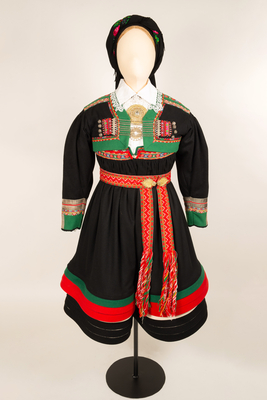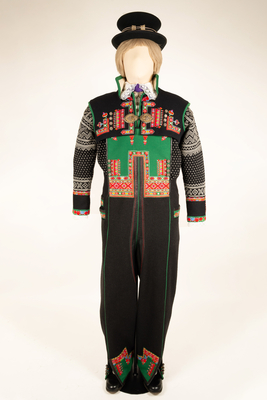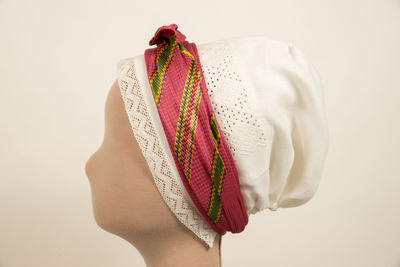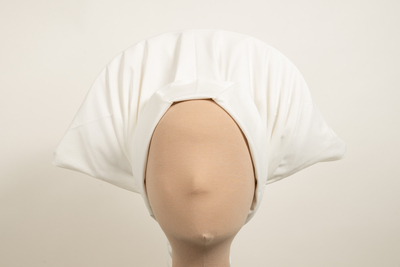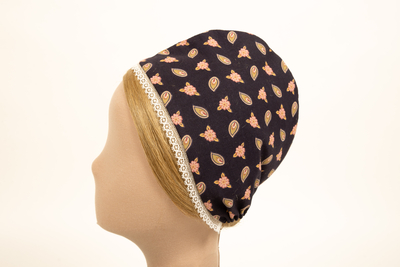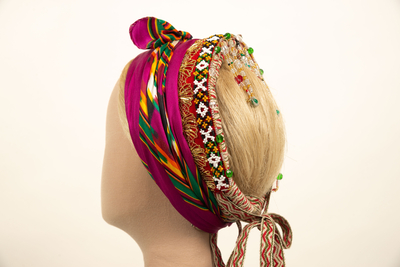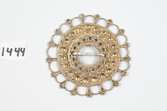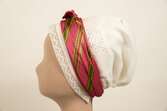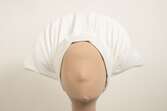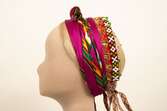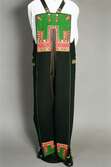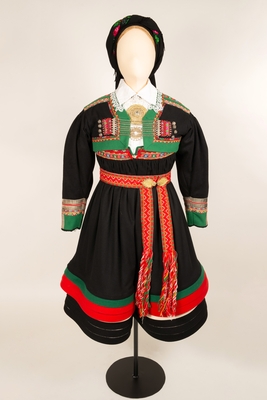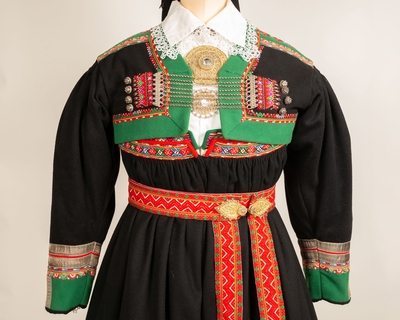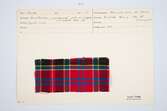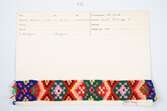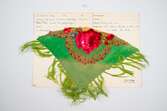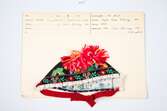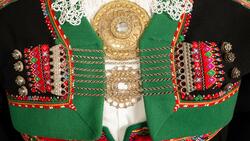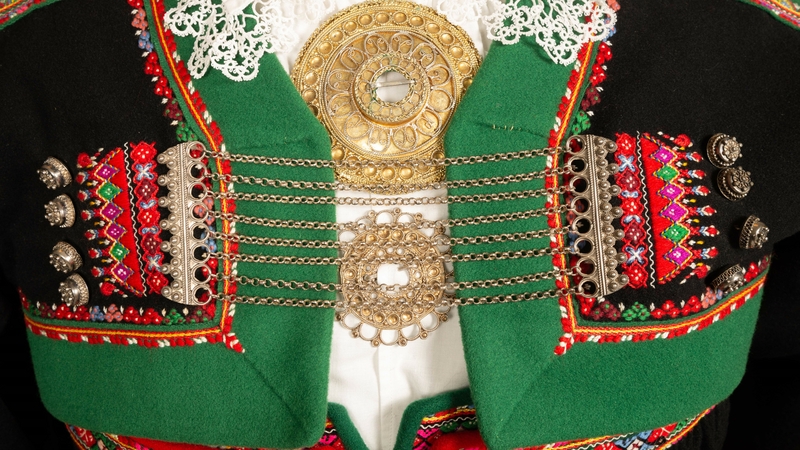
Aagot Noss (1924-2015)
Draktforsking og opplysningsarbeid vart livsoppgåva til Aagot Noss. Ingen har skrive meir om den norske draktskikken enn ho.
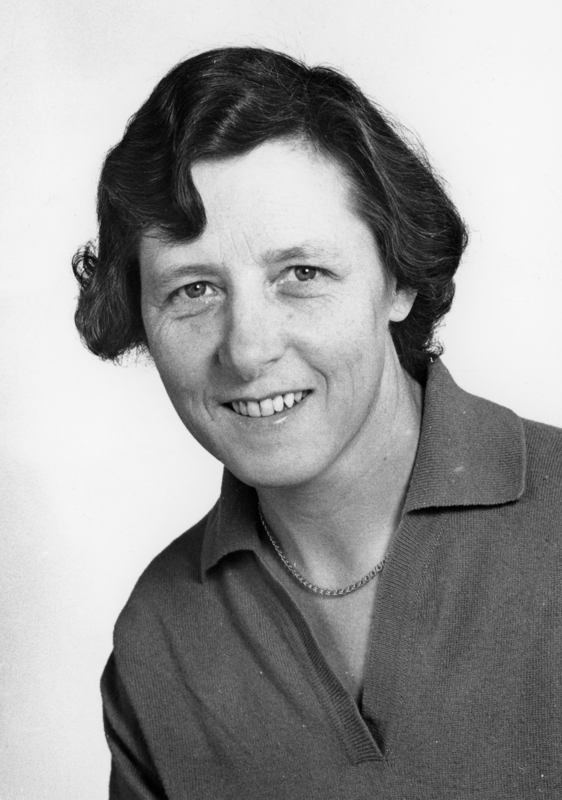
Sommaren 1956 drog den nyutdanna filologen Aagot Noss på feltarbeid til Hol i Hallingdal. På vegner av Norsk Folkemuseum skulle ho dokumentere den tradisjonelle draktskikken på bygdene. Øvst i Hallingdal gjekk eldre kvinner framleis stakkekledde til dagleg. Noss fekk dei i tale, og kvinnene fortalde om kleda som var brukte i bygda, om tekstilarbeid, skikkar og tradisjonar.
Feltarbeidet var starten på ei kartlegging av norsk draktskikk som Aagot Noss heldt fram med livet ut. Som konservator ved Norsk Folkemuseum arbeidde ho systematisk for å skape oversyn over kjeldene til den norske draktskikken. Ho sette intervjumateriale i samanheng med gjenstandar, bilete og arkivkjelder. Kunnskapen formidla ho gjennom bøker, utstillingar og filmar.
Interessa for hovudbunadene vakna tidleg. Noss tok føre seg det store mangfaldet av hovudbunader som har vore brukte i ulike fasar av livet omkring i landet, og normene for bruk av hovudplagg. Som leiar i Landsnemnda for bunadspørsmål prega Noss utviklinga innanfor bunadfeltet i mange år. Under hennar leiing la nemnda vekt på tekstilfagleg kompetanse og rådgiving bygd på tilgjengelege historiske kjelder.
Aagot Noss rydda innanfor fagfeltet ved å klargjere omgrep og leggje vekt på kjeldene til draktskikken. Ho trekte opp skiljet mellom folkedrakt og bunad og står fram som den fremste formidlaren av kunnskap om norske drakttradisjonar.
Artikkelen er ein del av utstillinga Fyrstedamer i bunad.
In the summer of 1956, recent philology graduate Aagot Noss went on a field trip to Hol in Hallingdal. She was to document the traditional dress customs in the district on behalf of the Norwegian Folk Museum. In the upper reaches of Hallingdal older women were still using traditional dress on a daily basis. Once they opened up to Noss, the women spoke about the clothes in use in the area and about textile work, customs, and traditions.
The fieldwork was the beginning of an ongoing survey of Norwegian dress customs that lasted for the rest of Aagot Noss’s life. As a curator at the Norwegian Folk Museum, she worked systematically to form an overview of the roots of Norwegian dress customs. She set interview material in context with objects, images, and archival sources, and conveyed her learning through books, exhibitions and films.
Noss took an early interest in the traditional headdress. She discussed the great diversity of headdresses worn in different stages of life across the country, in addition to the norms governing their use.
As chairwoman of the National Council for Bunad Issues, Noss influenced the development of the bunad field over many years. Under her leadership, the council placed importance on expertise in textile crafts and issued guidance on the basis of the available historical sources.
Aagot Noss brought order to the field by clarifying concepts and lending weight to the roots of dress customs. She drew a distinction between folk dress and the bunad, and stands out as the preeminent mediator of knowledge about Norwegian dress traditions.
This article is a part of the exhibition Leading Ladies in Bunad
